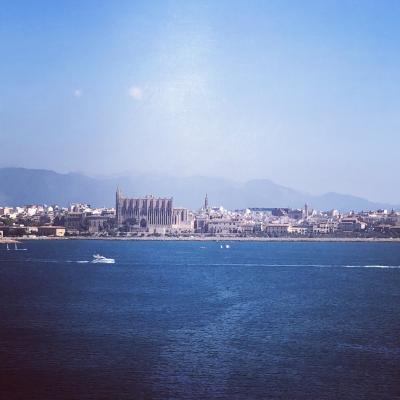Why is the Cathedral of Palma considered a symbol of Mallorca's shift from Moorish to Christian rule?
Similar Topics
cathedral of palma
la seu mallorca
moorish to christian
gothic cathedral mallorca
christian conquest mallorca
king james i
mallorca religious symbol
christian rule transition
The Cathedral of Palma, officially known as La Seu, stands prominently in Palma de Mallorca and is deeply symbolic of the island’s transition from Moorish to Christian rule. Originally, the site was home to a significant Moorish mosque during the period when the Moors controlled the Balearic Islands. Following the Christian conquest of Mallorca by King James I of Aragon in 1229, the mosque was dismantled to make way for the construction of a Gothic cathedral, marking a deliberate and powerful assertion of Christian dominance. The cathedral’s imposing architecture not only served religious purposes but also acted as a clear statement of the new political and cultural order established by the Christian rulers.
Construction of La Seu began in 1229 and extended over several centuries, reflecting the evolving styles and ambitions of Mallorca’s Christian leaders. Built on the site overlooking the sea, it provided a dramatic visual reminder to the population of the island’s changed allegiance. The cathedral’s design incorporates significant Gothic elements, such as soaring vaulted ceilings and intricate stained glass windows, which contrast sharply with the Moorish architectural features that had previously characterized the location. This stylistic transformation emphasized the distinct identity of Christian Europe and helped to embed the island culturally and spiritually within the Christian world.
Moreover, La Seu became not just a religious center but a symbol of Mallorca’s integration into the wider influence of Christendom. Inside the cathedral, relics, chapels, and artworks commissioned by the Christian monarchy further reinforced the message of a restored Christian presence. The cathedral was also closely linked to the monarchy, serving as a place of worship for the royal family and a setting for significant ceremonies. In this way, the Cathedral of Palma embodies the historical, cultural, and political shift that Mallorca underwent—a transition from centuries of Islamic influence to a Christian kingdom firmly connected to medieval Europe.
Construction of La Seu began in 1229 and extended over several centuries, reflecting the evolving styles and ambitions of Mallorca’s Christian leaders. Built on the site overlooking the sea, it provided a dramatic visual reminder to the population of the island’s changed allegiance. The cathedral’s design incorporates significant Gothic elements, such as soaring vaulted ceilings and intricate stained glass windows, which contrast sharply with the Moorish architectural features that had previously characterized the location. This stylistic transformation emphasized the distinct identity of Christian Europe and helped to embed the island culturally and spiritually within the Christian world.
Moreover, La Seu became not just a religious center but a symbol of Mallorca’s integration into the wider influence of Christendom. Inside the cathedral, relics, chapels, and artworks commissioned by the Christian monarchy further reinforced the message of a restored Christian presence. The cathedral was also closely linked to the monarchy, serving as a place of worship for the royal family and a setting for significant ceremonies. In this way, the Cathedral of Palma embodies the historical, cultural, and political shift that Mallorca underwent—a transition from centuries of Islamic influence to a Christian kingdom firmly connected to medieval Europe.
🧩 Related Questions
Related Question
What are some common challenges travelers face when visiting Mallorca without a plan?
Related Question
How do farmers in Mallorca protect almond trees when using traditional harvesting practices?
Related Question
How can travelers best plan their visit to Olivart to avoid crowds during peak tourist seasons?

